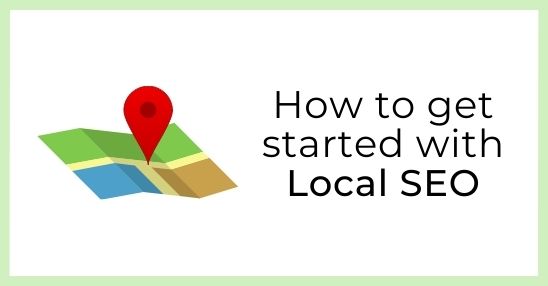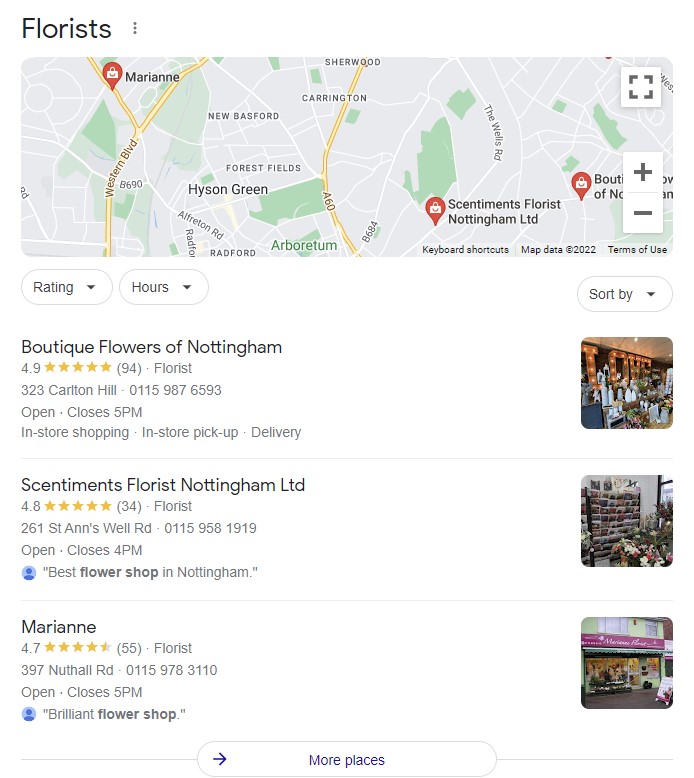
What is Local SEO and how do I get started?
What is local SEO?
Think about what happens when you need to find a new restaurant, barber, or doctor in your area. Most likely, you’ll open up your laptop or phone and search for businesses near you. If the first page of results doesn’t have what you’re looking for, you might expand your search to surrounding areas—or refine it by adding a keyword or two.
If your business relies on local customers (such as walk-ins), it’s crucial that you make it onto that first page of results. Otherwise, all those potential customers will go to one of your competitors, leaving revenue on the table.
Local SEO is an effective way to market your business online in your area. It helps businesses promote their products and services to local customers at the exact time they’re looking for them online—when they’re searching for relevant products and services on in search engines.
What ranking factors impact local SEO?
![]() Local SEO follows the same SEO elements as any other site, but with a different angle: your local area. All elements are weighed depending on their importance and the ability they have to impact your rankings.
Local SEO follows the same SEO elements as any other site, but with a different angle: your local area. All elements are weighed depending on their importance and the ability they have to impact your rankings.
At a high level, there are three types of factors:
- On-page signals—information you can add, change, or control directly on the HTML of your website that tells search engines what it’s about
- Off-page signals—information placed elsewhere on the web that tells search engines what your site is about
- External Local Signals—a combination of things from how well you manage Google My Business to how many times people click through to your site from the results page
Improving your local search rankings
- Optimise your site for your local area
If you operate in specific local areas, it’s important that you optimise your site to reflect this. It’s no use trying to compete on the generic term for “plumber” or “florist” if you only want to show within your immediate area! Detailing the area you work in can help make sure you only show for relevant searches.
In some cases you may even want to create specific area landing pages if your services differ per area. It might be worth calling in an SEO for more detailed advice if you’re not sure how to proceed here.
- Use consistent NAP (name, address, phone number)
When it comes to your local business, you have to make sure that you’re using the exact same NAP across all of your citations (see also the next point). When search engines see that you’ve listed your name as “Sheepy Shearing Inc.” on one website and “Sheepe Shiere” on another website, these inconsistent citations can cause confusion for Google about which is correct.
To ensure that this doesn’t happen to your business, make sure to use the exact same NAP across all platforms where you have a presence. This includes Google My Business listings, Yelp pages and other websites as well.
- Get listed in online directories
In addition to making sure that your information is consistent across various platforms, it’s also essential to be included in a number of online directories where users might be looking for businesses like yours. Some examples include Yelp or Facebook Business Manager (if you’re running paid advertising). There are thousands of different directories out there which may not seem relevant at first glance but could potentially help drive traffic to your site if people are searching specifically for those types of services or products in your area.
Always do a bit of research to ensure the directory is legit and has decent domain standing: if it is already considered a spam origin then it will not have a positive impact on your website to be linked from there.
Get on Google My Business
 Google My Business is a free listing provided by Google, that will prime you for being shown in Google Maps searches, and in organic search results. You will have seen the business information on the side of the SERP: that’s powered by Google My Business.
Google My Business is a free listing provided by Google, that will prime you for being shown in Google Maps searches, and in organic search results. You will have seen the business information on the side of the SERP: that’s powered by Google My Business.
Ensure there is only one listing for your business, and fill out all the relevant informational areas; use your keywords, add images, describe your services, and write for humans, just like you would on your website.
Google My Business also has a review feature. You can ask clients to leave a review, as those will be visible to possible customers in the future. Make sure you regularly check in on your reviews – you can reply to reviews, positive or negative, but you can’t remove reviews.
Local SEO is a subset of SEO where you include your area in your targeting, making you more relevant for this area, but less for generic searches. Alongside optimising your website it is important to have external sites link to you with the correct NAP details. Lastly, owning and maintaining a Google My Business listing will help increase your visibility in Google Maps.
This article is part of the Get Started hub. Learn how you can get started with SEO and Content Marketing, or get in touch for more support.
